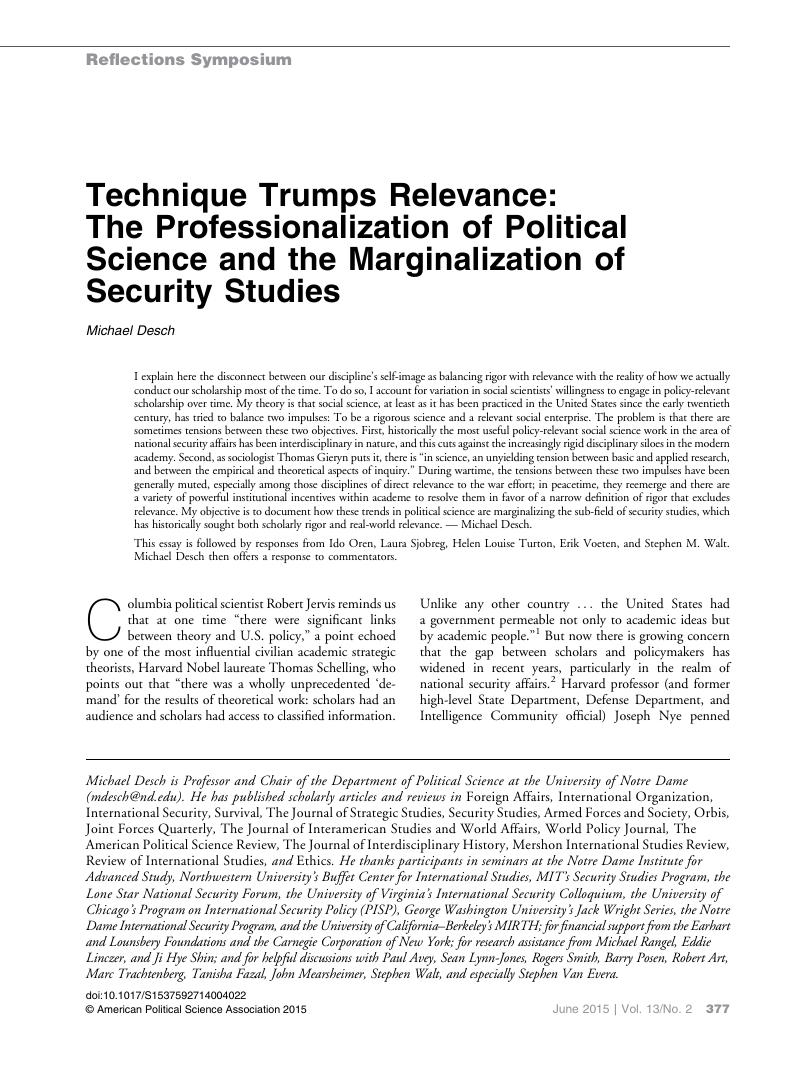Crossref Citations
This article has been cited by the following publications. This list is generated based on data provided by Crossref.
Jahn, Beate
2016.
Theorizing the Political Relevance of International Relations Theory.
International Studies Quarterly,
p.
sqw035.
Miller, Charles
2017.
Policy relevance: a sceptical view.
Australian Journal of International Affairs,
Vol. 71,
Issue. 3,
p.
300.
Goh, Evelyn
2019.
US Dominance and American Bias in International Relations Scholarship: A View from the Outside.
Journal of Global Security Studies,
Vol. 4,
Issue. 3,
p.
402.
Rosert, Elvira
2019.
Die Internationalen Beziehungen auf dem Rückzug? Warum Professionalisierung und Praxisrelevanz kein Widerspruch sind.
Zeitschrift für Außen- und Sicherheitspolitik,
Vol. 12,
Issue. 1,
p.
113.
McIntosh, Christopher
2022.
From Policy Relevance to Present Relevance: Entanglement, Scholarly Responsibility, and the Ethics of Quantum Social Theory.
Global Studies Quarterly,
Vol. 2,
Issue. 3,
Avey, Paul C
Desch, Michael C
Parajon, Eric
Peterson, Susan
Powers, Ryan
and
Tierney, Michael J
2022.
Does Social Science Inform Foreign Policy? Evidence from a Survey of US National Security, Trade, and Development Officials.
International Studies Quarterly,
Vol. 66,
Issue. 1,



